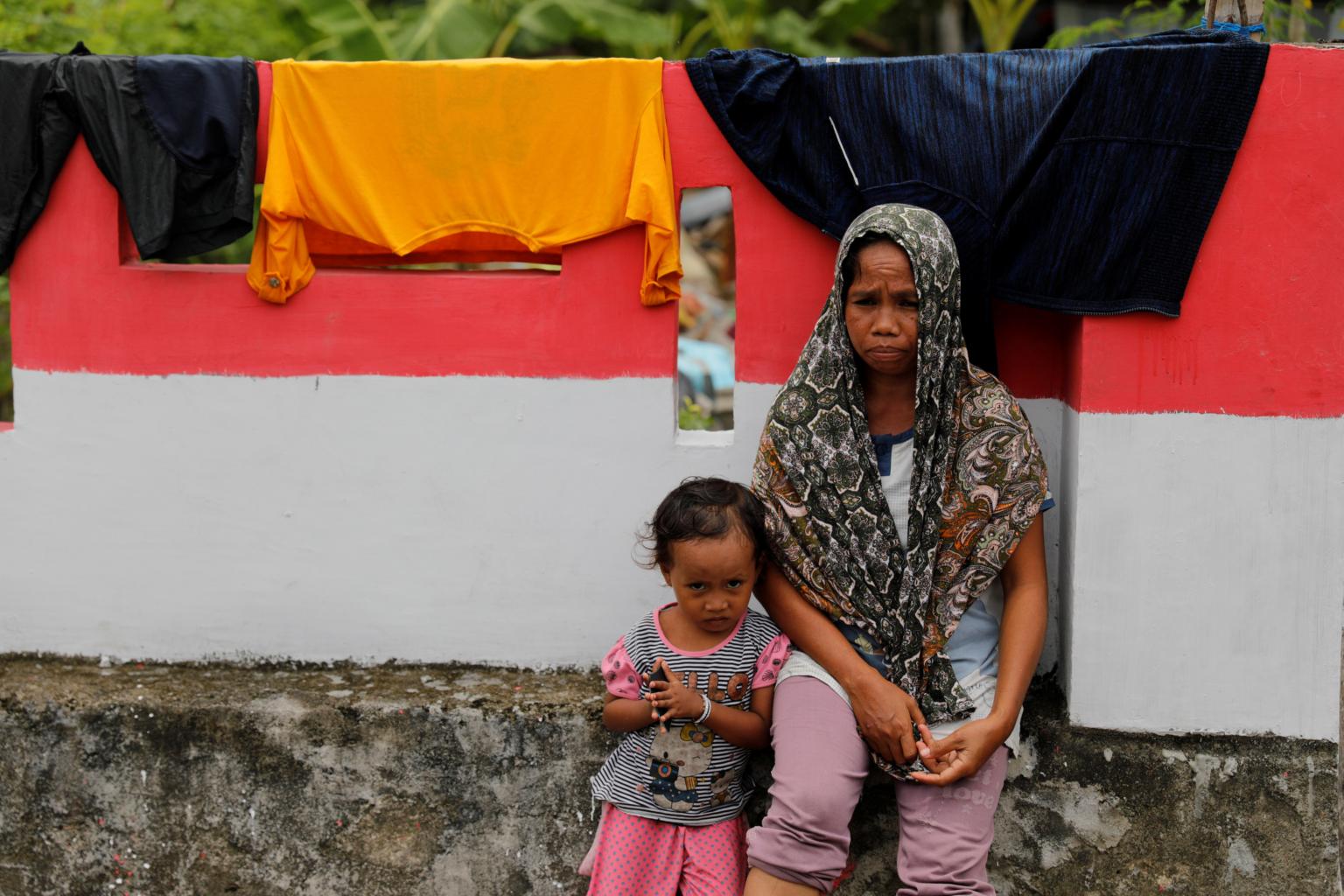Sulawesi quake: Schools begin counting how many children will be back
Sign up now: Get insights on Asia's fast-moving developments

A mother sits with her daughter at the epicentre of a devastating earthquake at Lende Tovea village in Donggala, Sulawesi, Indonesia, on Oct 6, 2018.
PHOTO: REUTERS
Follow topic:
PALU, INDONESIA (REUTERS) - Children in the Indonesian city of Palu began returning to school on Monday (Oct 8) to tidy up their classrooms and to help gather data on how many of them will be coming back, 10 days after a major earthquake and tsunami hit their city.
The 7.4-magnitude quake on Sept 28 brought down many buildings in the small city on Sulawesi island, 1,500km north-east of Jakarta, while tsunami waves smashed into its beachfront.
But the biggest killer was probably soil liquefaction, which happens when a powerful quake turns the ground into a liquid mire, and which obliterated several Palu neighbourhoods.
The official death toll is 1,763 but bodies are still being recovered. No one knows how many people are missing but it is at least in the hundreds.
At one state high school, teenagers dressed in grey and white uniforms swept up broken glass in the classrooms. Trophies had fallen from a broken school showcase and the basketball court was cracked.
"It's sad to see our school like this," said Dewi Rahmawati, 17, who expects to graduate next year and wants to study economics at university.
The students found out that they had to turn up to school through messages on Facebook and WhatsApp.
School principal Kasiludin said the authorities told all teachers to show up for work from Monday to collect information on student numbers.
"We won't force the students to come back because many are traumatised. But we must start again soon to keep their spirits up and so they don't fall behind," he said.
The school had lost at least seven students and one teacher, he said.
POSITIVE THINKING
At the SMP Negeri 15 Palu middle school, fewer than 50 of its 697 students showed up.
School principal Abdul Rashid said he was aware of four students killed in the quake.
"Classes haven't started. We're only collecting data to find out how many students are safe," he said.
"I'm still waiting for the Ministry of Education to give us instructions on when to begin classes. For now, I don't think we're ready. Many children are traumatised and frightened."
One boy chatting in the school compound with a few friends said he was disappointed that so few of his classmates had shown up.
"I want school to start as soon as possible so I can find out how my friends are doing," said Muhamad Islam Bintang Lima, dressed in the school uniform of white shirt and navy blue trousers.
"I haven't heard from so many of them. I want to think positively; I hope they are OK."
Most of the dead from the quake and tsunami were in Palu, the region's main urban centre. Figures for more remote areas are trickling in, but they seem to have suffered fewer deaths than the city.
Sulawesi is one of Indonesia's five main islands. The archipelago sees frequent earthquakes and occasional tsunamis.
In 2004, a quake off Sumatra island triggered a tsunami across the Indian Ocean that killed 226,000 people in 13 countries, including more than 120,000 in Indonesia.
A spokesman for the national disaster mitigation agency said on Sunday that searches for bodies would stop on Thursday.
Debris would be cleared and areas hit by liquefaction would be turned into parks, sports venues and other public spaces, the spokesman said.

